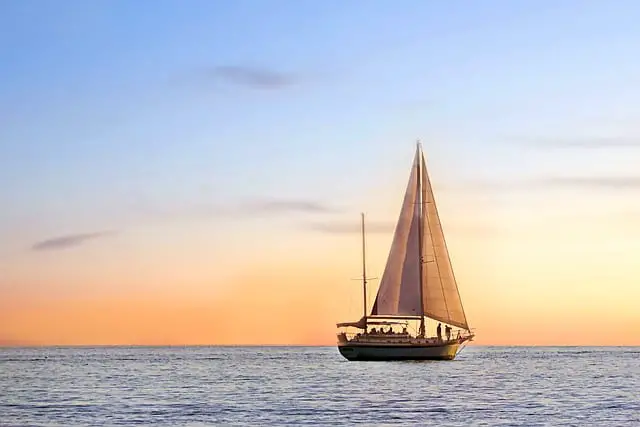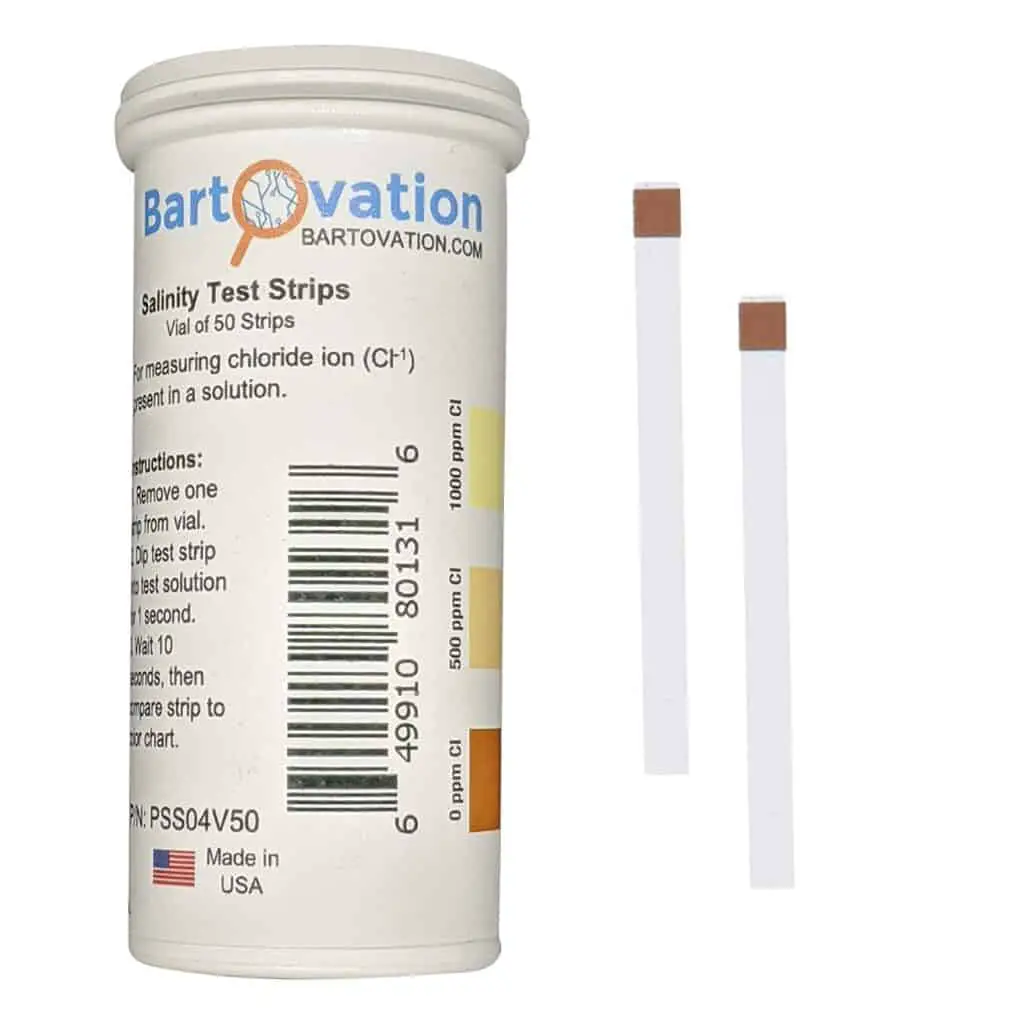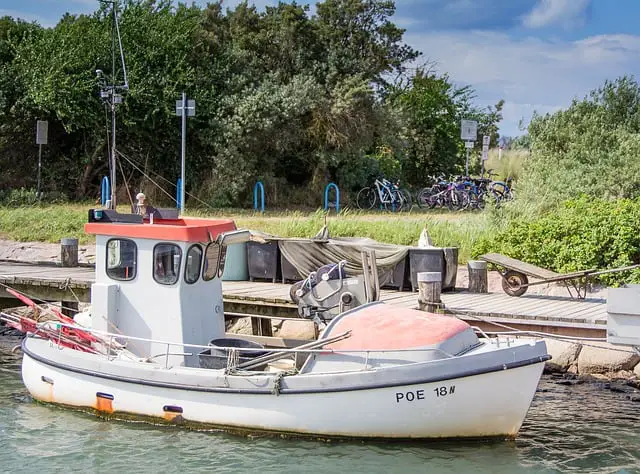
This a quote that always got me thinking, partially about the immense challenge involved with sourcing water at sea, but also the technological advances we have had in desalination and more importantly, compact desalination over the last 500 years.
“Water water everywhere and not a drop to drink“
The Rime of the Ancient Mariner – Samuel Taylor Coleridge
Being able to stay offshore for months at a time is something I was always fascinated by, the ability for ships to be largely self-sufficient and to produce fresh water. It did make me wonder though, how do they do it, what is the best option for different boats? Is there a one size fits all approach? How do you make sure the water is ok to drink? All of these questions got me thinking, what do you need to consider when installing or purchasing a desalination system for a boat? To better understand what is involved, I got researching and came up with this guide!
Compact reverse osmosis desalination systems powered manually or with varied electrical sources are suitable for most recreational boat users. For larger vessels with onboard motors, distillation becomes more viable, particularly as engine size increases and the excess heat produced can be utilized effectively.
1. The type of desalination system!
Realistically and practically speaking there are only two types of desalination systems suitable for boats, the most common being reverse osmosis and the alternative being distillation. Both options have their own advantages and disadvantages with certain boat types suited to one over the other.
Reverse osmosis (RO)
Reverse osmosis is a popular desalination technology that uses a semi-permeable membrane to remove salt and other contaminants from seawater. RO systems work by applying pressure to seawater, forcing it through a membrane that allows only freshwater molecules to pass through, leaving the salt and other impurities behind.
Advantages: RO systems are highly efficient, producing freshwater with a high salt rejection rate. They are also compact, lightweight, and relatively easy to install, making them ideal for boats with limited space. Additionally, RO systems require less energy than other desalination methods, making them more environmentally friendly and cost-effective in the long run.
Disadvantages: RO systems require regular maintenance, including membrane cleaning and replacement, to prevent fouling and other issues. They also require high-pressure pumps to operate, which can be expensive and may put a strain on the boat’s power supply. Furthermore, RO systems are sensitive to variations in water quality and temperature, which can affect their performance.
Example: Spectra Watermakers is a leading manufacturer of RO desalination systems for boats, offering a range of systems suitable for different boat sizes and water usage levels.
Best suited for.
Reverse-osmosis systems are generally the most common system utilized in marine environments due to their scalability, more compact nature and lower energy requirements. Sailing boats and vessels powered by outboard motors almost exclusively utilize reverse osmosis systems as they do not produce the excess heat required to operate distillation systems at an efficient level.
Distillation desalination systems
Distillation desalination systems use heat to evaporate seawater, leaving behind salt and other contaminants, and then condensing the steam into fresh water.
Advantages: Distillation systems produce high-quality freshwater that is free from most impurities, including bacteria, viruses, and dissolved solids. They are also relatively simple to operate and maintain, with no membranes or filters to replace. Additionally, distillation systems can be powered by a variety of heat sources, including electricity, gas, or diesel, making them suitable for different types of boats.
Disadvantages: Distillation systems are generally less efficient than other desalination methods, requiring more energy to produce the same amount of freshwater. They are also bulkier and heavier than RO systems, which can be a challenge on smaller boats with limited space. Furthermore, distillation systems are more expensive to purchase and install than other desalination methods, and may not be practical for boats with limited budgets.
Example: GEA is a manufacturer of innovative distillation desalination systems for boats where the heat produced by the engine is used in the distillation process, improving the overall efficiency of freshwater production.
Best suited for:
Distillation systems are best suited for large vessels with comprehensive onboard diesel motors. These larger vessels produce excess heat in the engine room which can be utilized in the distillation process, lowering the specific energy required to run the distillation system and thereby lowering the cost of operation.
2. The size of the desalination system.
When selecting a desalination system for a boat, size is a crucial factor to consider both the physical size of the unit and the production requirements. Factors to consider include the boat’s size, water usage, and budget.
Boat Size: This may seem obvious, but the size of the desalination system should be appropriate for the size of the boat. A large boat will require a larger desalination system to produce enough fresh water for the crew’s needs. A small boat, on the other hand, may only require a compact and lightweight system.
Water Usage: The size of the desalination system also depends on the boat’s water usage. A boat with a large crew or that spends long periods at sea will require a larger system to produce enough fresh water. A boat with a smaller crew or that spends less time at sea may only require a smaller system.
Space Constraints: The size of the desalination system should also consider the available space on the boat. Larger systems may be difficult to install on smaller boats, while smaller systems may be more practical for boats with limited space.
Budget: The size of the desalination system will also affect the cost. Larger systems will generally be more expensive than smaller systems however this is not always the case as some high-performance options can be extremely compact.
3. Testing apparatus & Quality Control.
The quality of water produced by the desalination system on a boat must be monitored to ensure that it falls within the required salinity levels prior to any potential consumption or use. Being in a space-constrained environment, practicality is key and depending on the size of the system both automatic and manual processes should be considered.
The best option for low volumes: Test Strips

Test Strips: Salinity test strips are another practical option for testing salinity levels on a boat. They are small, lightweight, and require minimal space to store. Test strips are easy to use and can produce a result in just a few minutes. They are also relatively inexpensive and can be used to measure salinity levels in both fresh and saltwater. However, test strips may not be as accurate as other testing methods and may not be suitable for scientific or research purposes.
The test strips displayed to the left are available on Amazon for $23 USD, less than 50c per test!
The best option for continuous use: Conductivity Meters.
Conductivity meters are another practical option for testing salinity levels on a boat. They are portable, easy to use, and can measure salinity levels in both fresh and saltwater. Conductivity meters are more accurate than refractometers and test strips and can be automated for continuous monitoring. However, conductivity meters can be more expensive than other testing methods and may require more maintenance.
The third option: Refractometers.
Refractometers: Refractometers are one of the most practical salinity testing methods for use on a boat. They are small, lightweight, and easy to use, requiring only a small sample of water to produce a reading. Refractometers are also relatively inexpensive and can be used to measure salinity levels in both fresh and saltwater. They are ideal for quick and accurate testing and can be easily stowed away when not in use.
For a more in-depth article specifically focussed on salinity levels testing, have a look at How To Check Water Salinity Levels: 4 Potential Methods.
4. The power requirements.

Desalination systems on boats can be powered by different energy sources, including utilizing the excess heat from the ship’s motors, solar power, wind power, and an alternator. Each energy source has unique advantages and disadvantages that make them more suitable for specific desalination systems.
Distillation systems require a significant amount of heat, and therefore utilizing the excess heat from the ship’s motors is the most practical source of energy. The heat produced by the engine can be used to evaporate and condense seawater to produce fresh water.
Reverse osmosis systems, on the other hand, require a significant amount of electrical energy, making solar power, wind power, and an alternator or generator more suitable sources of energy. Solar power, in particular, is a renewable and sustainable energy source that can be harnessed by solar panels mounted on the boat’s deck.
Wind power is another renewable and sustainable energy source that can power desalination systems on boats. The energy from the wind can be harnessed using a wind turbine and used to power the desalination system. However, the amount of energy produced by wind turbines depends on wind speed and can be expensive to install.
Alternators or generators can also be used to power desalination systems on boats, they function by converting mechanical energy into electrical energy and can be used to charge the batteries and power the desalination system. The advantage of using an alternator is its reliability, as it doesn’t depend on the weather conditions. The amount of energy produced by the alternator, however, depends on the engine’s speed and the size of the alternator.
Often, a combination of the above-mentioned energy sources is used, with an alternator or generator providing the base load power (Along with heat energy released from the ship’s motors for distillation). The remaining power demand is then sourced from small wind turbines and solar panels which fluctuate throughout the day depending on the environment. A mixed array of energy sources provides the balance between cost-effectiveness and reliability that is required to run desalination systems on board boats and ships.
5. The location of the system on the boat.

The location of a desalination system on a boat is an important factor to consider, as it can affect the efficiency and safety of the system. Here are some considerations to keep in mind when determining the optimal location for a desalination system on a boat:
- Accessibility: The desalination system should be installed in a location that is easily accessible for maintenance and repair. If the system is installed in a hard-to-reach location, it may be difficult to fix in case of a breakdown.
- Weight distribution: The weight of the desalination system can affect the boat’s balance and stability. The system should be installed in a location that balances the weight of the boat evenly. For example, if the system is heavy, installing it in the centre of the boat may be best.
- Vibration: Desalination systems can produce a significant amount of vibration, which can be uncomfortable for passengers and damage the boat’s structure. To minimize vibration, the system should be installed in a location that is isolated from other equipment and machinery.
- Water source: The location of the desalination system on the boat should be near the water source, such as the sea or a freshwater tank. This will minimize the length of the pipes and hoses required to transport water to the system, which can reduce the risk of leaks and water loss.
- Electrical connections: The desalination system requires electrical power to function, so it should be installed in a location that is close to the boat’s electrical system. This will reduce the length of the electrical cables needed, which can reduce the risk of electrical failure and improve the system’s efficiency.
- Ventilation: The desalination system generates heat and produces water vapour, so it should be installed in a well-ventilated location to prevent overheating and moisture buildup. Adequate ventilation can also prevent the accumulation of harmful fumes and gases.
- Noise: Desalination systems can produce a significant amount of noise, which can be disturbing to passengers and wildlife. To minimize noise, the system should be installed in a location that is isolated from cabins and areas where people congregate.
6. Storage requirements.
Water storage is an important consideration for any boat owner using a desalination system. Four key points to consider when it comes to water storage requirements for a desalination system on a boat are the water demand, available space, water quality and required maintenance:
- Water demand: The amount of water needed by the boat and its passengers will determine how much water storage is required. Boat owners should consider the number of people on board, the length of the trip, and the water needs for cooking, cleaning, and personal hygiene. This information will help determine the size of the water storage tank needed.
- Available space: The amount of space available on the boat will determine the size and shape of the water storage tank. Boat owners should consider the size and shape of the tank and where it can be located on the boat. This will depend on the boat’s design and layout, as well as the other equipment and storage needs on board.
- Water quality: The quality of the water produced by the desalination system will affect the storage requirements. Some systems produce water with high salt content, which can impact the taste of the water and corrode tanks and pipes over time. Boat owners should consider using tanks made from materials that are resistant to corrosion, such as stainless steel or plastic.
- Maintenance: Proper maintenance of the water storage tank is essential for ensuring the quality of the water and preventing damage to the tank and pipes. Boat owners should consider the maintenance requirements of the tank and the desalination system when selecting a storage tank. Some tanks may require frequent cleaning or flushing to prevent the buildup of bacteria or algae, while others may require regular inspection for cracks or leaks and therefore should be located in an easily accessible location.
7. The price of the system.
The financial cost of a desalination system is a critical consideration for boat owners who want to ensure a reliable source of fresh water on board. There are several costs associated with desalination systems, including the upfront cost of the system, installation costs, and ongoing maintenance costs.
The upfront cost of a desalination system can vary widely depending on the size and complexity of the system. Simple systems such as handheld or manual reverse osmosis units can be purchased for a few hundred dollars, while larger and more complex systems can cost tens of thousands of dollars. Additionally, the type of system will determine the ongoing costs of replacement filters or membranes, which can add up over time.
Installation costs for desalination systems will also vary depending on the type and size of the system, as well as the boat’s design and layout. Simple systems may require minimal installation work and can be DIY installed, while larger and more complex systems may require professional installation and plumbing work.
Ongoing maintenance costs for desalination systems include the cost of replacement filters or membranes, as well as any required maintenance or repairs. The cost of replacement filters or membranes can vary depending on the type and size of the system, as well as the frequency of use. Maintenance and repair costs may also vary depending on the complexity of the system and any required professional services.
For the average dinghy with an outboard motor, a handheld or manual reverse osmosis unit is likely the most affordable desalination system. These units can be purchased for a few hundred dollars and require no installation costs, making them an ideal option for smaller boats with limited space and budget.
For sailboats, a compact and portable reverse osmosis system that can be easily stored and transported is an excellent option. These systems are typically larger and more expensive than handheld units, but they can provide a reliable source of fresh water for longer trips.
For an extremely compact desalination system suitable as a backup water supply for recreational usage, take a look at Quenchsea, without a doubt the most lightweight manual desalination unit on the market.
For larger boats with onboard motors, a more complex and higher-capacity desalination system may be required. These systems can cost tens of thousands of dollars to purchase and install, and ongoing maintenance costs can be significant. However, they provide a reliable source of fresh water for longer trips and can be an excellent investment for boat owners who spend extended periods at sea.
https://www.spectrawatermakers.com/us/us
https://www.gea.com/en/products/liquid-processing/water-treatment-systems/sea-water-distiller.jsp
https://waterbornemag.com/watermaker/
https://www.saltwaterpoolandspa.com/salt-water-test-kit.html
https://www.xylemanalytics.com/en/parameters/conductivity-and-salinity
https://letsdowater.com/how-to-check-water-salinity-levels-4-potential-methods/
https://www.quenchsea.world/

